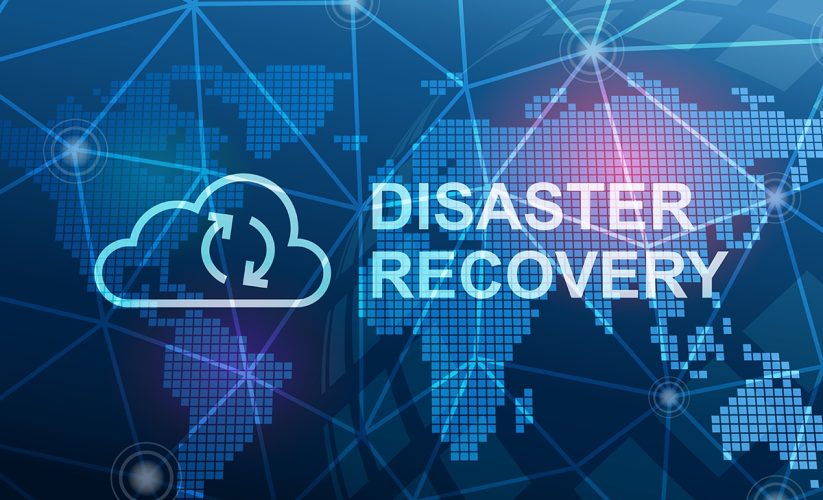
The Essential Guide to Disaster Recovery for Small Firms
In an increasingly unpredictable world, small businesses face numerous threats that can disrupt operations, ranging from natural disasters to cyberattacks. For many small firms, the consequences of these disruptions can be devastating, leading to significant financial losses and potential closure. This is where disaster recovery services for small business become essential. This guide will provide small business owners with the knowledge they need to develop an effective disaster recovery plan that protects their assets and ensures business continuity.
Understanding Disaster Recovery
Disaster recovery refers to the strategies and processes that organizations put in place to recover from disruptive events. It encompasses a wide range of activities, including data backup, system restoration, and business continuity planning. Effective disaster recovery services ensure that a business can quickly return to normal operations after an interruption, minimizing downtime and data loss.
Why Small Businesses Need Disaster Recovery
- Data Protection: Small businesses often hold sensitive customer information, financial records, and proprietary data. Losing this data can severely impact both operations and reputation.
- Operational Continuity: The longer a business remains offline, the more revenue it loses. A solid disaster recovery plan minimizes downtime and helps ensure that operations can continue even in adverse situations.
- Regulatory Compliance: Many industries have specific regulations regarding data protection. A well-structured disaster recovery plan helps businesses comply with these requirements, avoiding potential penalties.
- Peace of Mind: Knowing that a robust disaster recovery plan is in place provides business owners with the confidence to focus on growth and innovation rather than worrying about potential disruptions.
Key Components of a Disaster Recovery Plan
When developing a disaster recovery plan, small businesses should consider several key components:
1. Risk Assessment
Understanding the potential risks your business faces is the first step in developing an effective disaster recovery plan.
- Identify Threats: Assess the types of threats that could disrupt your business, such as natural disasters (floods, earthquakes), cyber threats (ransomware, data breaches), and hardware failures.
- Evaluate Impact: Determine the potential impact of these threats on your operations, finances, and reputation.
2. Data Backup Solutions
Reliable data backup is critical for any disaster recovery strategy.
- Automatic Backups: Implement solutions that provide regular, automated backups to ensure that your data is consistently protected.
- Cloud and Local Options: A combination of cloud-based and on-premises backups can provide redundancy and flexibility in data storage.
3. Recovery Time Objectives (RTO) and Recovery Point Objectives (RPO)
Defining RTO and RPO is essential for setting recovery expectations.
- RTO: This is the maximum acceptable time your business can be down after a disaster. Establishing a clear RTO helps prioritize recovery efforts.
- RPO: This refers to the maximum acceptable amount of data loss, measured in time. A shorter RPO indicates more frequent backups, reducing potential data loss.
4. Comprehensive Security Measures
Security is a crucial aspect of disaster recovery.
- Data Encryption: Ensure that sensitive data is encrypted, both at rest and in transit, to protect against unauthorized access.
- Multi-Factor Authentication (MFA): Implementing MFA adds an extra layer of security, safeguarding access to critical systems and data.
5. Employee Training and Awareness
Your team plays a vital role in disaster recovery.
- Training Programs: Regular training sessions should be conducted to educate employees about disaster recovery procedures and their roles during an incident.
- Security Awareness: Foster a culture of security awareness to minimize risks associated with human error, such as phishing attacks.
6. Regular Testing and Updating
A disaster recovery plan is only effective if it is regularly tested and updated.
- Conduct Drills: Schedule regular disaster recovery drills to ensure that all team members are familiar with their roles and that the plan works as intended.
- Review and Update: As your business evolves, regularly review and update your disaster recovery plan to reflect changes in operations, technology, and regulatory requirements.
7. Selecting a Disaster Recovery Service Provider
Choosing the right disaster recovery services for small business is crucial for effective implementation.
- Evaluate Options: Research various providers and compare their services, features, and pricing. Look for a provider with a proven track record in your industry.
- Support and Expertise: Ensure that the provider offers 24/7 support and has expertise in your specific business needs.
Implementing Your Disaster Recovery Plan
Once you have developed a disaster recovery plan, it’s time to implement it.
- Communicate the Plan: Share the disaster recovery plan with all employees to ensure everyone is aware of their roles and responsibilities.
- Monitor Performance: Regularly monitor the performance of your disaster recovery plan, making adjustments as necessary based on testing results and feedback.
- Establish Partnerships: Collaborate with other businesses, local authorities, and emergency services to strengthen your recovery capabilities.
Conclusion
Investing in disaster recovery services for small business is not just a precaution; it is a vital strategy for ensuring the survival and growth of your company. By understanding the essential components of a disaster recovery plan and implementing effective strategies, small businesses can protect their data, minimize downtime, and ensure compliance. With a robust disaster recovery plan in place, you can focus on driving your business forward, confident that you are prepared for whatever challenges may arise.





